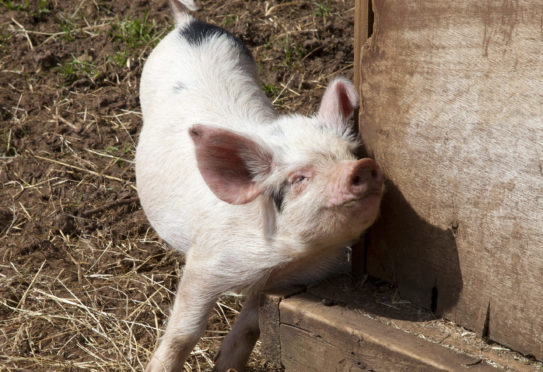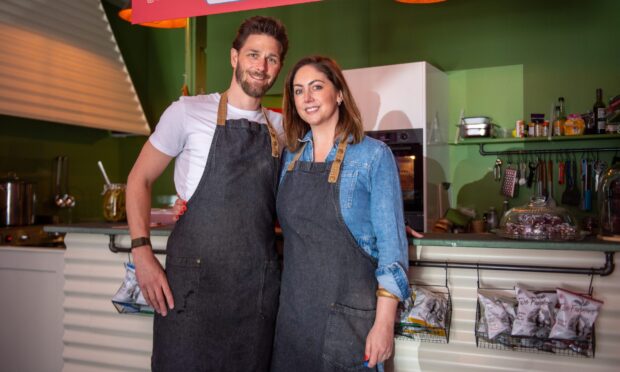I don’t know about you but I have been scratching the backs of two pigs – with a stick.
The controversial incident took place at the Fairy Glen, a hidden copse 10 minutes’ walk from the house that leads down to a lovely shore where, sometimes, you see otters bobbing aboot in the waves.
The Glen was busy. I encountered three other people. One was at a distance on the shore, and we just waved.
The other two – dog-walkers – were coming the other way on the narrow path. I did the gallant thing and came off the path, climbing a short slope out of their road.
At the top of the slope there were two pigs. I should explain that they were behind a fence in an adjoining field. But, gently, they ambled over, and seemed very friendly indeed.
I said, “Hello” and smiled, as I think brighter animals detect smiles, and I wanted to pat them on the heid, but wasn’t sure if you were allowed to while the lockdown was on.
Then I remembered: “Pigs like to be tickled. Sure I read that somewhere. I know: I’ll get a long stick and scratch their backs.”
As you know, I’m a man of action – is that tittering I hear at the back? – and so I put my thought into practice, found a long stick and proceeded to scratch the backs of the animals. And, sure enough, they loved it.
They rolled over and shut their eyes and seemed to be in piggie heaven. I must confess that I don’t know much about pigs. These weren’t your normal pink, hairless ones. These had short fur, and a right intelligent look in their eyes.
So, when I got home, I looked them up. Nothing is simple, of course, but I think they might be kunekune pigs, which are originally from New Zealand and have, according to Wikipedia, a “docile, friendly nature”.
I also checked out the pigs at Caenhill Countryside Centre, in Wiltshire. This is a place I visit most days, on yonder YouTube. At Caenhill, Chris, Caroline and their team of helpers have a vast menagerie of geese, ducks, hens, emus, cats, pigs, sheep, donkeys, rabbits, guinea pigs, cows and a scarecrow.
Their pigs are quite hairy, but I think, if I’ve read it right (the personnel vary), they’re “a cross between Saddleback and Old English Spot”. They don’t look as hairy as the Fairy Glen’s, and the latter seemed happy eating grass.
As it happens, one of my favourite heroes from literature, Lord Emsworth in PG Wodehouse’s Blandings novels, was devoted to his pig, The Empress. He soothed his mind in stressful times by reading Augustus Whiffle on “The Care of the Pig”.
As you would expect, I have a copy of this (expertly put together by James Hogg, complete with Emsworth’s personal annotations, such as “Well put indeed” and “I find the sound of the Empress sleeping an invaluable soporific in the late evening”), and will consult it more frequently from now on.
The first chapter features a quote from Whiffle’s uncle, Sir Craster Whiffle, to wit: “You may discover all that is necessary of a man’s character from his attitude to pigs.”
Well, I like the beasties fine, and will continue to scratch their backs wherever I find them.











